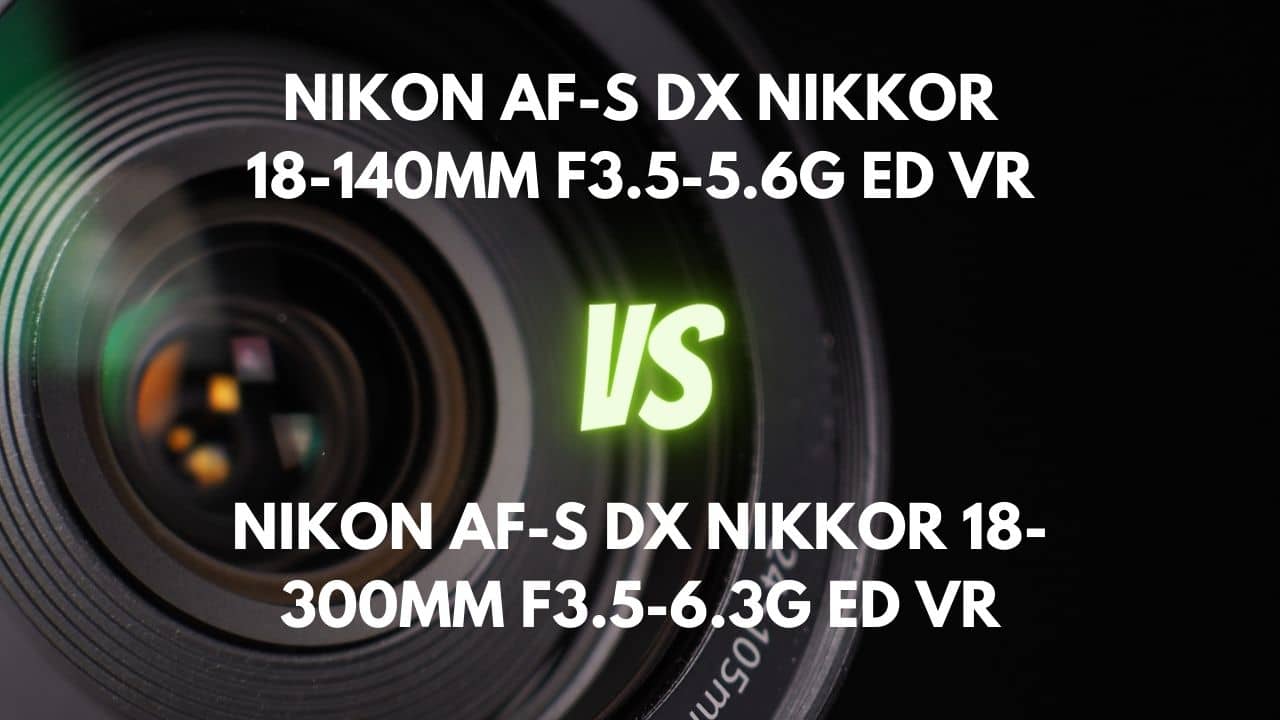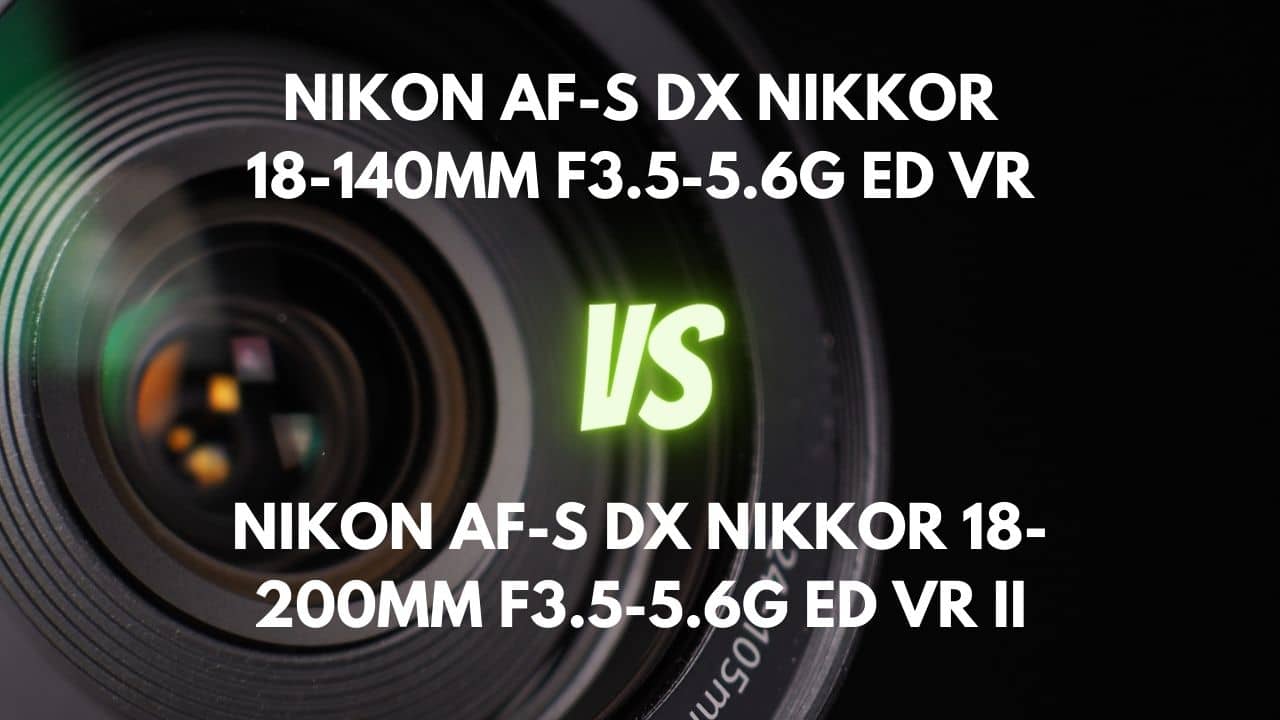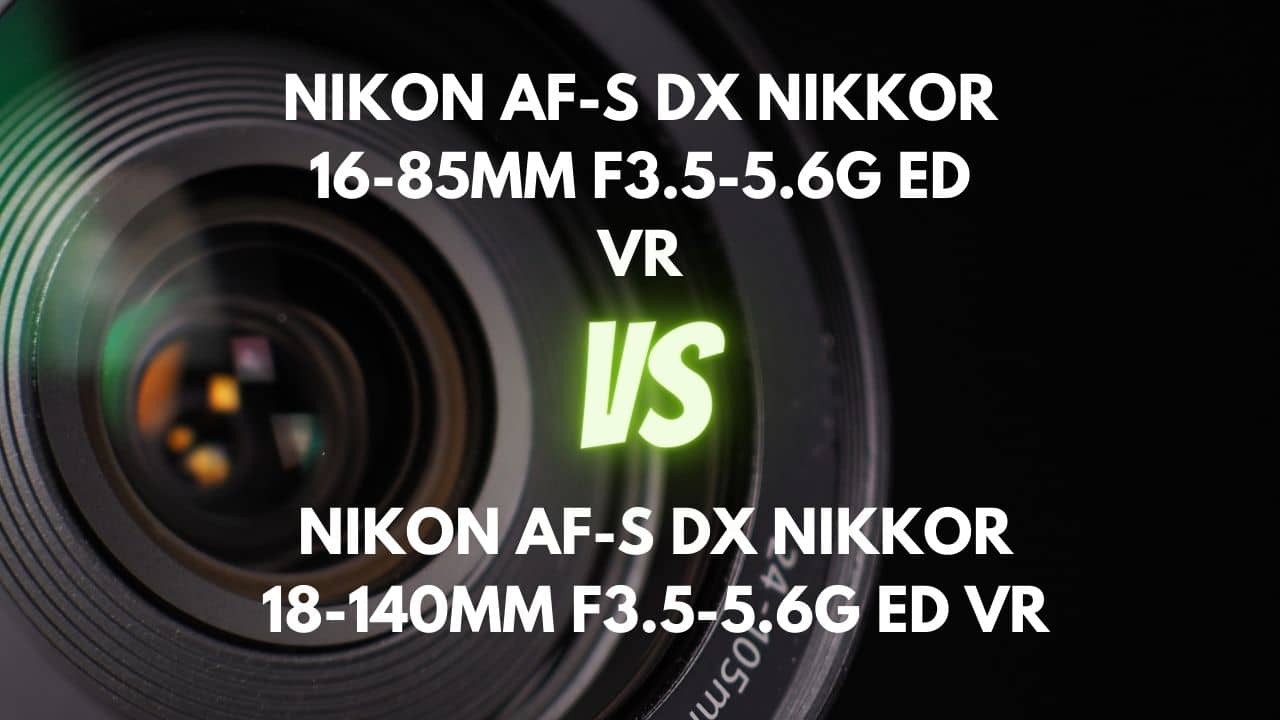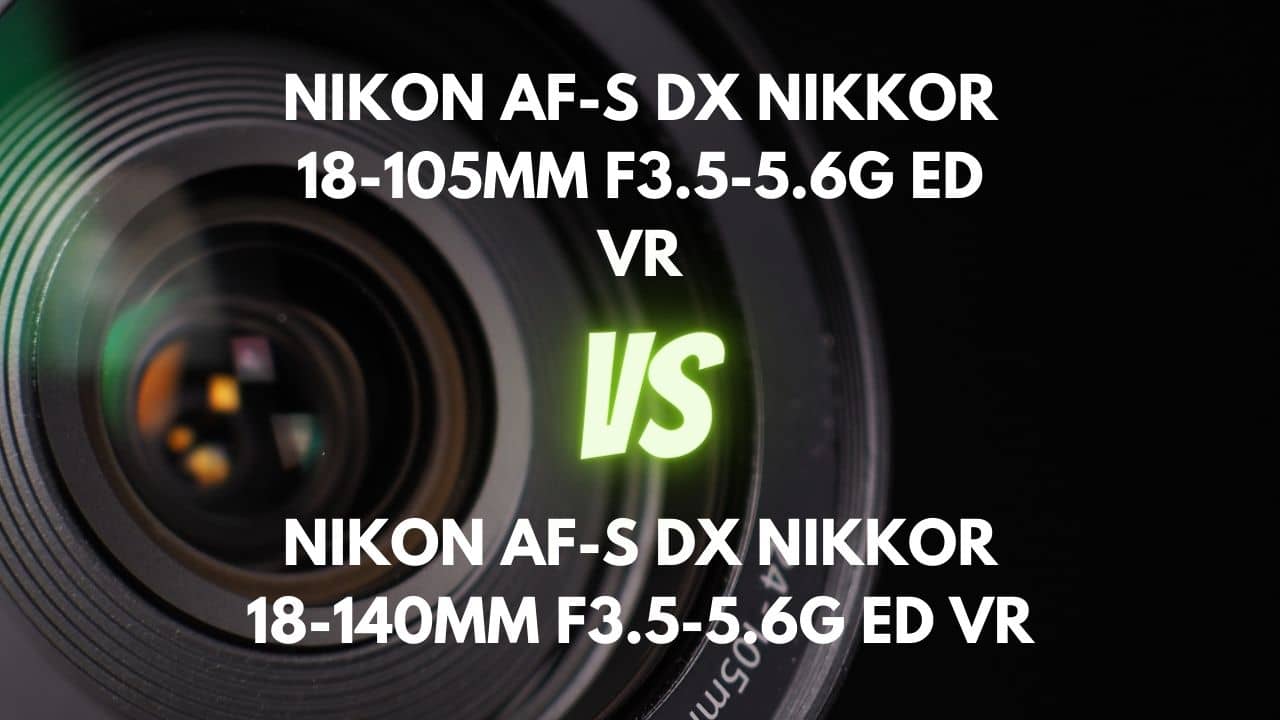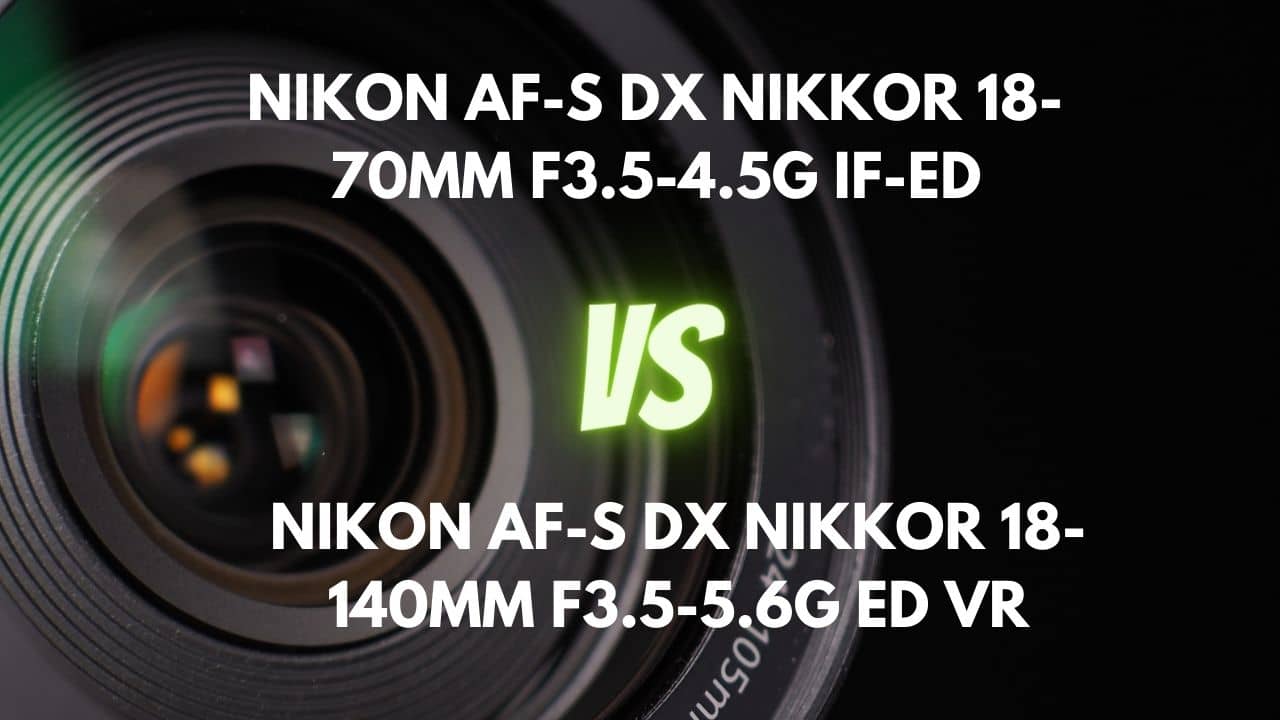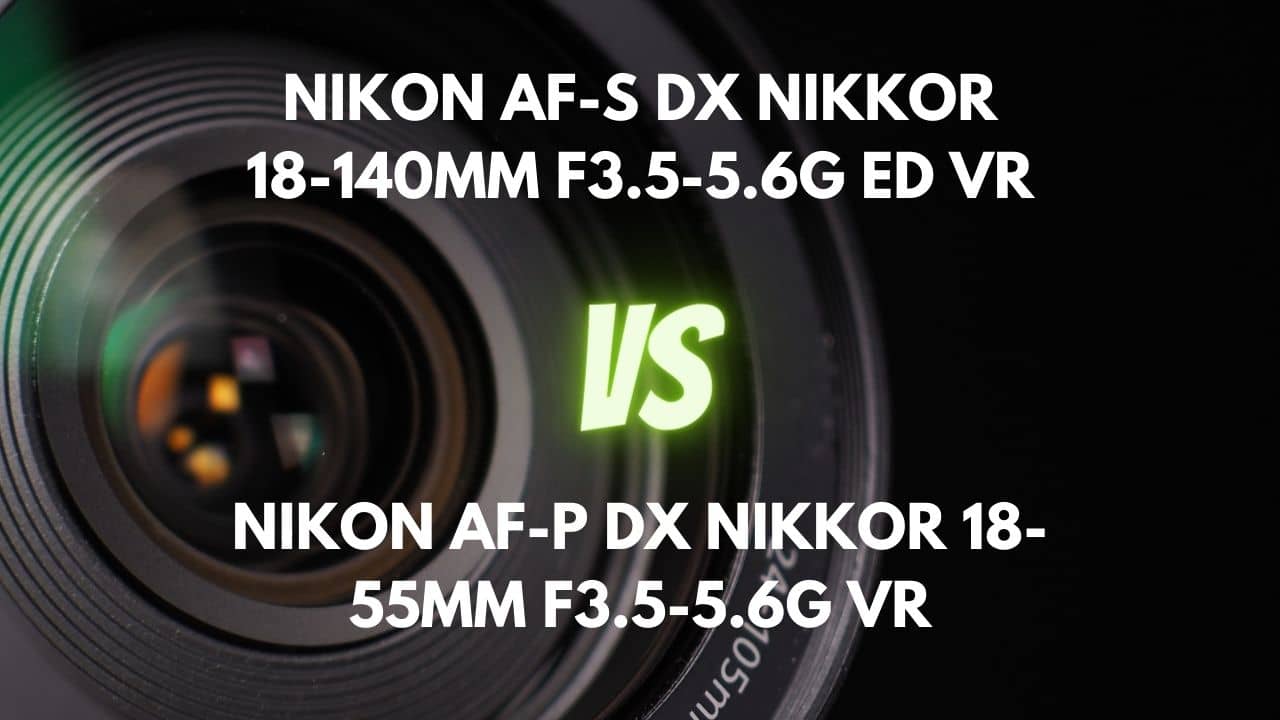Are you in search of a versatile, all-in-one lens that can capture stunning images across a range of photography styles? Look no further, as we bring you an in-depth comparison of two popular Nikon DX lenses: the 18-135mm f/3.5-5.6 and the 18-140mm f/3.5-5.6.
These two lenses have garnered praise from photographers for their adaptability, making them ideal choices for everything from travel, street, sports, and even portrait photography.
We understand that finding the perfect lens is crucial for achieving your creative vision, and these lenses offer a balance between performance, portability, and affordability.
In this article, we’ll delve into the features and characteristics that set these lenses apart, helping you make an informed decision on which lens best suits your needs.
Join us as we explore the differences in build quality, autofocus, optical stabilization, and image quality, among other factors, to help you capture breathtaking photos with ease. By the end of this comparison, you’ll have a clearer understanding of the strengths and weaknesses of each lens, empowering you to make the best choice for your photographic endeavors.
So, let’s dive into the world of these two remarkable lenses and discover which one will elevate your photography to new heights!
Overview
| Nikon AF-S DX NIKKOR 18-135mm F3.5-5.6G IF-ED | Nikon AF-S DX NIKKOR 18-140mm F3.5-5.6G ED VR | |
|---|---|---|
| Max Aperture | F3.5-5.6 | F3.5-5.6 |
| Aperture Type | Variable | Variable |
| Focal Range (mm) | 18-135 | 18-140 |
| Max Format | APS-C / DX | APS-C / DX |
| Zoom Ratio (X) | 7.5 | 7.8 |
Comparing the Nikon DX 18-135mm f/3.5-5.6 and the Nikon DX 18-140mm f/3.5-5.6, both lenses offer similar specifications, such as maximum aperture and format compatibility. However, the 18-140mm lens has a slightly higher zoom ratio (7.8x) than the 18-135mm lens (7.5x), which translates into a slightly longer reach for telephoto shots.
In terms of aperture, both lenses have a variable aperture of f/3.5-5.6, which can affect their low light performance and depth of field control. While a larger aperture can be beneficial in certain situations, these lenses are still versatile choices for various photography genres, such as travel, events, and wildlife photography.
When considering image quality, both lenses may exhibit some compromises compared to prime lenses, especially at certain focal lengths or aperture settings. However, their versatility and zoom capabilities can outweigh these potential drawbacks for many photographers.
In conclusion, both the Nikon DX 18-135mm f/3.5-5.6 and the Nikon DX 18-140mm f/3.5-5.6 are versatile and flexible options for photographers who need to adapt to changing scenes or subjects quickly. While the 18-140mm lens offers a slightly longer reach with its higher zoom ratio, the choice between these two lenses will ultimately depend on your specific needs and preferences.
Design and Ease of Use
| Nikon AF-S DX NIKKOR 18-135mm F3.5-5.6G IF-ED | Nikon AF-S DX NIKKOR 18-140mm F3.5-5.6G ED VR | |
|---|---|---|
| Diameter x Length (mm) | ⌀73.5×86.5mm | ⌀78×97mm |
| Weight (gr) | 385 | 490 |
| Filter Thread (mm) | 67 | 67 |
| Weather Sealing | No | No |
| Zoom Method | Rotary (extending) | Rotary (extending) |
| Distance Scale | No | No |
| DoF Scale | No | No |
| Hood Supplied | Yes | No |
| Hood Code | HB-32 | HB-32 |
Comparing the Nikon’s DX 18-135mm f/3.5-5.6 and the Nikon DX 18-140mm f/3.5-5.6, there are some noticeable differences in their physical dimensions and weight.
The 18-135mm lens is more compact with a diameter of 73.5mm and length of 86.5mm, and it weighs 385 grams. On the other hand, the 18-140mm lens is slightly larger with a diameter of 78mm and length of 97mm, and it weighs 490 grams. Both lenses use an extending rotary zoom method, which affects their size, balance, and weather sealing.
The more compact and lighter 18-135mm lens offers several advantages, such as easier portability, better balance, and discreetness, making it more suitable for travel, street, or sports photography. Its smaller size and lighter weight also make it more convenient for storage and lens swapping.
Conversely, the larger and heavier 18-140mm lens might be more challenging to handle and carry around for extended periods. However, its slightly longer focal range could be advantageous for photographers who require that extra reach in their shots.
Lens Mount and Barrel
The lens mount of Nikon’s DX 18-135mm f/3.5-5.6 is made of plastic, making it lightweight and less likely to wear out the camera mount. However, it doesn’t have a rubber gasket around the mount, which would have provided better resistance to moisture and dust. The lens barrel is built with cheaper quality plastic, and the lens extends considerably (up to 9 inches or 23cm) when zooming.
On the other hand, the lens mount of Nikon DX 18-140mm f/3.5-5.6 is also made of metal without any weather sealing or rubber gasket. This makes it less resistant to moisture and dust, similar to the 18-135mm lens. The lens barrel is made of polycarbonate plastic with a metal mounting plate, offering a more robust build.
It also features a textured rubber grip on the zoom ring and a ridged rubber grip on the manual focus ring for comfortable handling. The lens extends by just over 50mm when zooming from 18mm to 140mm, and the inner barrel moves smoothly with no wobbling.
In conclusion, the 18-140mm lens has a superior lens mount and barrel, offering a better build quality. While both lenses do not have gaskets for weather sealing, the 18-140mm’s metal lens mount makes it more robust and durable.
Weather Sealing
Comparing the Nikon’s DX 18-135mm f/3.5-5.6 and the Nikon DX 18-140mm f/3.5-5.6 based on their weather sealing, we find that both lenses lack this protective feature.
The 18-135mm lens does not have a gasket at the lens mount, internal seals at the rings and switches, or a fluorine coating on the front element. Similarly, the 18-140mm lens is not weather sealed and lacks a gasket at the lens mount, internal seals at the rings, switches, or front of the barrel, and a fluorine coating on the front element. This means that neither lens is suitable for use in harsh weather conditions or environments with a high amount of moisture and dust.
Considering the importance of weather sealing for protection against dust, moisture, and light water splashes, both lenses fall short in this aspect. Weather sealing contributes to the durability and performance of a lens in various conditions, and while it may not be essential for indoor photography, it can be beneficial depending on the shooting conditions and locations.
In conclusion, neither the 18-135mm nor the 18-140mm lens offers superior weather sealing, as both lenses lack this protective feature. Photographers who frequently shoot in harsh conditions or require additional protection for their equipment should consider other lenses with weather sealing. However, for those who primarily shoot indoors or in controlled settings, weather sealing may not be a top priority, and either of these lenses could be suitable.
Rings
The Nikon’s DX 18-135mm f/3.5-5.6 features both a focus and zoom ring towards the front of the lens. The zoom ring is wide and rubberized, ensuring a comfortable grip, but may exhibit some zoom creep at the telephoto end. The focus ring is easy to manipulate, providing a pleasant tactile experience.
However, the lens lacks a windowed distance scale and depth-of-field indicator, and the zoom range is cramped together at the telephoto end, making precise telephoto composition somewhat challenging. Additionally, this lens does not have an extension lock switch on the zoom ring.
On the other hand, the Nikon DX 18-140mm f/3.5-5.6 also has 2 rings: a zoom ring and a focusing ring. The zoom ring occupies most of the barrel near the front of the lens, with a thick, textured rubber grip band for comfort.
The focusing ring is narrower but still features a ridged rubber grip band. The zoom ring is well-damped and has a nice resistance, while the focusing ring has a long throw but doesn’t provide much tactile feedback. Like the 18-135mm, this lens lacks a windowed distance scale, depth-of-field indicators, and an extension lock switch on the zoom ring.
In terms of ring superiority, the 18-140mm lens offers better ergonomics and control for both the zoom and focus rings. The zoom ring’s resistance and the focus ring’s long throw allow for more precise adjustments. However, it falls short in providing tactile feedback for the focusing ring. Meanwhile, the 18-135mm lens has a more user-friendly focus ring with a better tactile experience, but its zoom range is cramped at the telephoto end, making it slightly harder to achieve accurate telephoto compositions.
In conclusion, while both lenses have their merits, the 18-140mm lens edges out the 18-135mm lens in terms of superior rings, mainly due to its better ergonomics and control.
Switches/Buttons
The Nikon’s DX 18-135mm f/3.5-5.6 features a single mode switch with “A” and “M” markings, which is located on the lens barrel. The “A” mode allows for instant manual focus override by simply grabbing the focus ring, which is easy to move with just the tip of one finger. Apart from the mode switch, this lens does not have any other switches or buttons.
On the other hand, the Nikon DX 18-140mm f/3.5-5.6 has 2 control switches situated on its left side. One switch is for enabling or disabling autofocus (A or M), and the other switch is for turning vibration reduction on or off (ON or OFF). The aperture control is managed through a mechanical lever.
When comparing the switches/buttons on these lenses, the 18-140mm lens offers more control options with its separate switches for autofocus and vibration reduction. This additional functionality allows users to quickly adapt to various shooting scenarios. In contrast, the 18-135mm lens has a more minimalistic approach with only a single mode switch that offers instant manual focus override when in “A” mode.
In conclusion, the 18-140mm lens has a superior switches/buttons setup due to its greater versatility in control options, making it more convenient for photographers to adapt to different shooting situations.
Filter Thread
The Nikon’s DX 18-135mm f/3.5-5.6 has a filter thread size of 67 millimeters, which is a common filter size, making it easy to find and share filters among other lenses with the same thread size.
Meanwhile, the Nikon DX 18-140mm f/3.5-5.6 also features a 67-millimeter-wide filter thread, but it is made of metal, ensuring durability and longevity. This lens does not rotate during focus or zoom operation, which is convenient for using filters such as graduated neutral density filters and polarizers.
The front element is relatively flat and sits just behind the filter ring. Additionally, a small indicator mark on the outer edge of the filter ring serves as a guide for attaching the optional bayonet-style lens hood.
Both lenses share the same filter thread size of 67 millimeters, which offers a good balance of compatibility, availability, and cost. However, the 18-140mm lens has a slight edge due to its metal construction, non-rotating filter thread during operation, and the inclusion of an indicator mark for attaching the lens hood.
Lens Hood
The Nikon’s DX 18-135mm f/3.5-5.6 comes with a plastic lens hood included in the package. It features an ergonomic bevel and can be smoothly rotated, providing decent protection against lens flare and impacts to the front element.
On the other hand, the Nikon DX 18-140mm f/3.5-5.6 does not include a lens hood in the box, and it must be purchased separately as an optional accessory. This lens hood is also made of plastic and has a petal-shaped design with a bayonet mount. It can be reversed for storage and offers an ergonomic bevel and smooth rotation. Like the 18-135mm lens hood, it serves to prevent lens flare and protect the lens from impacts.
While both lens hoods are made of plastic and offer similar functionality, the 18-135mm lens has an advantage because it comes with the lens hood included in the package. The 18-140mm lens hood, being an optional accessory, incurs an additional cost. However, the petal-shaped design and bayonet mount of the 18-140mm lens hood might be more appealing to some users due to its aesthetics and secure attachment.
Focusing and Optical Stabilization
| Nikon AF-S DX NIKKOR 18-135mm F3.5-5.6G IF-ED | Nikon AF-S DX NIKKOR 18-140mm F3.5-5.6G ED VR | |
|---|---|---|
| Autofocus | Yes | Yes |
| AF Motor | Silent Wave Motor | Silent Wave Motor |
| Rotating Front Element | Does not rotate on focusing | Does not rotate on focusing |
| Min Focus Distance | 0.45m | 0.45m |
| Full-Time Manual Focus | Yes | Yes |
| Focus Method | Internal | Internal |
Focusing Performance
The Nikon’s DX 18-135mm f/3.5-5.6 features an autofocus motor that operates accurately and reasonably quickly, producing a quiet wishing and squeaking sound. Its autofocus acquisition speed is decent, although it may struggle in low light or low-contrast situations.
The lens allows for instant manual focus override by simply grabbing the focus ring, which works excellently and can be moved with just the tip of one finger. This lens has an internally focusing design, meaning the length remains constant, and the front element doesn’t rotate during focusing. However, it does exhibit focus breathing, causing the image to zoom in and out slightly when changing focus.
In contrast, the Nikon DX 18-140mm f/3.5-5.6 is equipped with an ultrasonic Silent Wave Motor, ensuring a reasonably fast, very quiet, and almost silent autofocus operation. It performs well in both single-servo autofocus and continuous autofocus modes.
Like the 18-135mm lens, it allows manual focus override by turning the focus ring, providing a smooth focusing experience. It also has an internally focusing design, with the length of the lens remaining constant and the front element not rotating during focusing. However, this lens also exhibits focus breathing, especially at the long end of the zoom range.
In summary, both lenses offer good focusing performance, with the 18-140mm lens having a slightly superior and quieter autofocus operation due to the Silent Wave Motor.
Optical Stabilization
The Nikon’s DX 18-135mm f/3.5-5.6 lacks optical stabilization or VR (Vibration Reduction), which can result in blurry shots at longer focal lengths, particularly in low light conditions. This absence of stabilization may be less of an issue for wide-angle photography but becomes more significant as the focal length increases, especially when shooting handheld or in low-light situations.
On the other hand, the Nikon DX 18-140mm f/3.5-5.6 is equipped with Nikon’s VR technology, compensating for hand-held shake up to 4 f-stops for the system in the lens. The stabilization slider has 2 positions: on and off. This built-in VR stabilization is efficient and enables photographers to shoot hand-held at slow shutter speeds, such as 1/15 second, with the 140mm focal length and achieve roughly half of the shots taken sharp.
In conclusion, the 18-140mm lens has superior optical stabilization due to its VR technology, which allows photographers to capture sharper images at longer focal lengths and in low-light conditions. If optical stabilization is a priority for you, especially when shooting handheld or in challenging lighting situations, the 18-140mm lens is the better choice. However, if your camera has in-body image stabilization (IBIS) or you primarily shoot with a tripod or in well-lit environments, the lack of optical stabilization in the 18-135mm lens might not be as crucial.
Image Quality
| Nikon AF-S DX NIKKOR 18-135mm F3.5-5.6G IF-ED | Nikon AF-S DX NIKKOR 18-140mm F3.5-5.6G ED VR | |
|---|---|---|
| Special Elements | 2x ED lens elements 2x aspherical elements | 1 ED (extra-low dispersion) glass element, 1 aspherical lens element |
| Diaphragm Blades | 7 | 7 |
| Circular Aperture | Yes | No |
Aberration
The Nikon’s DX 18-135mm f/3.5-5.6 exhibits chromatic aberration, which manifests as colored fringes towards the edges of the image, most commonly seen as red/cyan fringing at the extreme ends of the zoom range. Although present, this aberration can be corrected through in-camera processing or post-processing software. Additionally, the lens may suffer from residual spherical aberrations at the wide end of the zoom range, causing focus shift when stopping down.
In contrast, the Nikon DX 18-140mm f/3.5-5.6 also exhibits chromatic aberration, which is more noticeable in this model than in previous Nikon offerings. However, it is generally not objectionable, with the corners of test images showing slight dark blue fringing around areas of high contrast. On a positive note, the coma performance of the 18-140mm lens is excellent, showing no evidence of smeared blobs around bright points of light, even in the corners of the image.
In conclusion, both lenses exhibit chromatic aberration, but the 18-135mm lens appears to have a slightly better performance in this regard. However, the 18-140mm lens has an advantage in terms of coma performance.
Sharpness
The Nikon’s DX 18-135mm f/3.5-5.6 demonstrates varying sharpness depending on focal length and aperture. Generally, the center of the image is sharp, with slightly soft corners at wider angles. However, stopping down to f/8 or f/11 can significantly improve corner sharpness.
The lens is sharp wide open, and stopping down enhances overall sharpness. The sharpest aperture varies depending on the focal length, with f/8 or f/11 being ideal starting points. The lens’s sharpness is generally impressive considering its low cost and wide zoom range.
In comparison, the Nikon DX 18-140mm f/3.5-5.6 exhibits good sharpness performance. Center sharpness is quite good at wider apertures and improves further upon stopping down to f/5.6 and beyond. However, corner sharpness can be slightly soft, especially at wider angles, but stopping down to around f/8 can significantly improve it.
The sharpest aperture varies depending on the focal length, but f/8 and f/11 generally provide the best results. The effects of diffraction become visible around f/8 and become a serious problem at f/16 or smaller apertures.
In conclusion, both lenses display commendable sharpness performance. The 18-135mm lens offers impressive sharpness for its low cost and wide zoom range, while the 18-140mm lens shows better sharpness at the center. If you prioritize center sharpness and can work with slightly softer corners, the 18-140mm lens would be the better option. However, if you’re looking for a more budget-friendly option with good overall sharpness, the 18-135mm lens may be the superior choice.
Bokeh Quality
The Nikon’s DX 18-135mm f/3.5-5.6 produces a reasonably pleasing bokeh quality, especially in the mid to long range. Although it may not be as smooth and beautiful as some higher-end lenses, it still creates a pleasant background blur that effectively separates subjects from the background. This makes it a suitable option for portrait, nature, and animal photography, where bokeh plays a crucial role in enhancing the visual appeal of the images.
In contrast, the Nikon DX 18-140mm f/3.5-5.6 lens uses an iris diaphragm comprising of seven blades that produce a slightly jittery bokeh effect. Bokeh quality is subjective, and it can range from decent to excellent, depending on the focusing distance, focal length, and aperture settings. To capture the smoothest background blur, it’s recommended to stand back and zoom in to the maximum focal length of 140mm while shooting at f/5.6.
In conclusion, both lenses offer varying degrees of bokeh quality. While the 18-135mm lens provides a reasonably pleasing bokeh that is suitable for various photography styles, the 18-140mm lens offers a somewhat nervous bokeh with a range of fair to good quality depending on the shooting conditions.
Flare/Ghosting
The Nikon’s DX 18-135mm f/3.5-5.6 exhibits well-controlled flare and ghosting, primarily due to the included lens hood that helps minimize these issues. When the sun directly hits the lens, you may notice more ghosts than on some other modern lenses, but the lens hood effectively manages these occurrences. It’s essential to use the lens hood in challenging lighting situations to maintain optimal image quality and reduce flare and ghosting.
When compared, the Nikon DX 18-140mm f/3.5-5.6 lens demonstrates minimal instances of flare and ghosting in most scenarios, due to the implementation of Nikon’s Integrated Coating, which helps to minimize these optical aberrations. Nevertheless, in situations where one is shooting directly into the sun or other intense light sources, some ghosting may still be observed.
The optional petal-shaped lens hood (HB-32) can be used to further minimize the likelihood of flare and ghosting. It’s worth mentioning that the occurrence of ghosting can be partially managed, with fewer ghosts appearing when utilizing a fixed lens and more ghosts appearing when using an older, single-coated zoom lens.
In conclusion, both lenses handle flare and ghosting relatively well. The 18-135mm lens benefits from its included lens hood, while the 18-140mm lens leverages Nikon’s Integrated Coating to minimize these issues. The 18-140mm lens have a slight edge due to its advanced coating, but the performance of both lenses is generally good. Using the appropriate lens hood in challenging lighting situations is recommended for both lenses to achieve the best results.
Vignetting
The Nikon’s DX 18-135mm f/3.5-5.6 exhibits vignetting at both ends of the zoom range, which can be noticeable at wider apertures. However, this can be easily edited in post-processing or left as is since it may not bother most users. Stopping down the aperture can help reduce vignetting to some extent. The level of vignetting varies depending on the focal length used and whether in-camera corrections are turned off.
Conversely, the Nikon DX 18-140mm f/3.5-5.6 lens exhibits visible vignetting at different focal lengths, particularly when in-camera correction is switched off. The vignetting becomes more pronounced towards the ends of the zoom range compared to the middle. To decrease the effects of vignetting, it’s recommended to stop down the aperture to f/5.6 or f/8, which can assist in brightening up the corners.
In conclusion, both lenses experience vignetting to some degree, particularly at the extreme ends of their respective zoom ranges. The 18-140mm lens may require more attention to correct vignetting, especially when in-camera corrections are disabled. However, stopping down the aperture can help reduce vignetting in both lenses, and post-processing software can correct any residual issues.
Distortion
The Nikon’s DX 18-135mm f/3.5-5.6 exhibits noticeable distortion throughout its focal range. At 18mm, it displays significant barrel distortion, which is common in zoom lenses. As you zoom in, the distortion transitions into pincushion distortion, especially from 28mm to 135mm. This can be problematic when photographing architecture or landscapes. However, many users report that the distortion is manageable, and newer cameras with in-built distortion correction features or post-processing software can mitigate its impact.
In contrast to the previous lens attribute discussed, the Nikon DX 18-140mm f/3.5-5.6 demonstrates conspicuous distortion, particularly at the wider focal lengths. At 18mm, there is barrel distortion, and from 35mm to 140mm, pincushion distortion is apparent. Despite the noticeable distortion at various focal lengths, the Nikon DX 18-140mm f/3.5-5.6 lens comes with in-camera distortion correction, and it can also be fixed using post-processing software. To combat this issue, some users suggest enabling Auto Distortion Correction from the camera’s menu.
In conclusion, both lenses exhibit distortion to varying degrees, with the 18-135mm lens showing more barrel distortion at wider focal lengths and the 18-140mm lens displaying more pincushion distortion as you zoom in. In both cases, in-camera distortion correction and post-processing software can help manage these issues.
Final Verdict
After considering all the factors, it can be concluded that both the Nikon DX 18-135mm f/3.5-5.6 and the Nikon DX 18-140mm f/3.5-5.6 offer their own unique advantages and trade-offs.
The 18-135mm lens is a lighter, more compact option with good overall sharpness and pleasing bokeh, making it suitable for travel, street, and sports photography.
The 18-140mm lens, on the other hand, offers superior build quality, optical stabilization, and better center sharpness, making it a better choice for photographers who need that extra reach or prioritize stabilization and sharpness.
Both lenses exhibit chromatic aberration, flare/ghosting, vignetting, and distortion to varying degrees, but in-camera corrections and post-processing software can manage these issues. The choice between the two lenses ultimately depends on your specific needs, priorities, and preferences.
Photographers who prioritize a lighter, more budget-friendly option with good overall performance may prefer the 18-135mm lens, while those who value build quality, stabilization, and slightly better optical performance might lean towards the 18-140mm lens.

